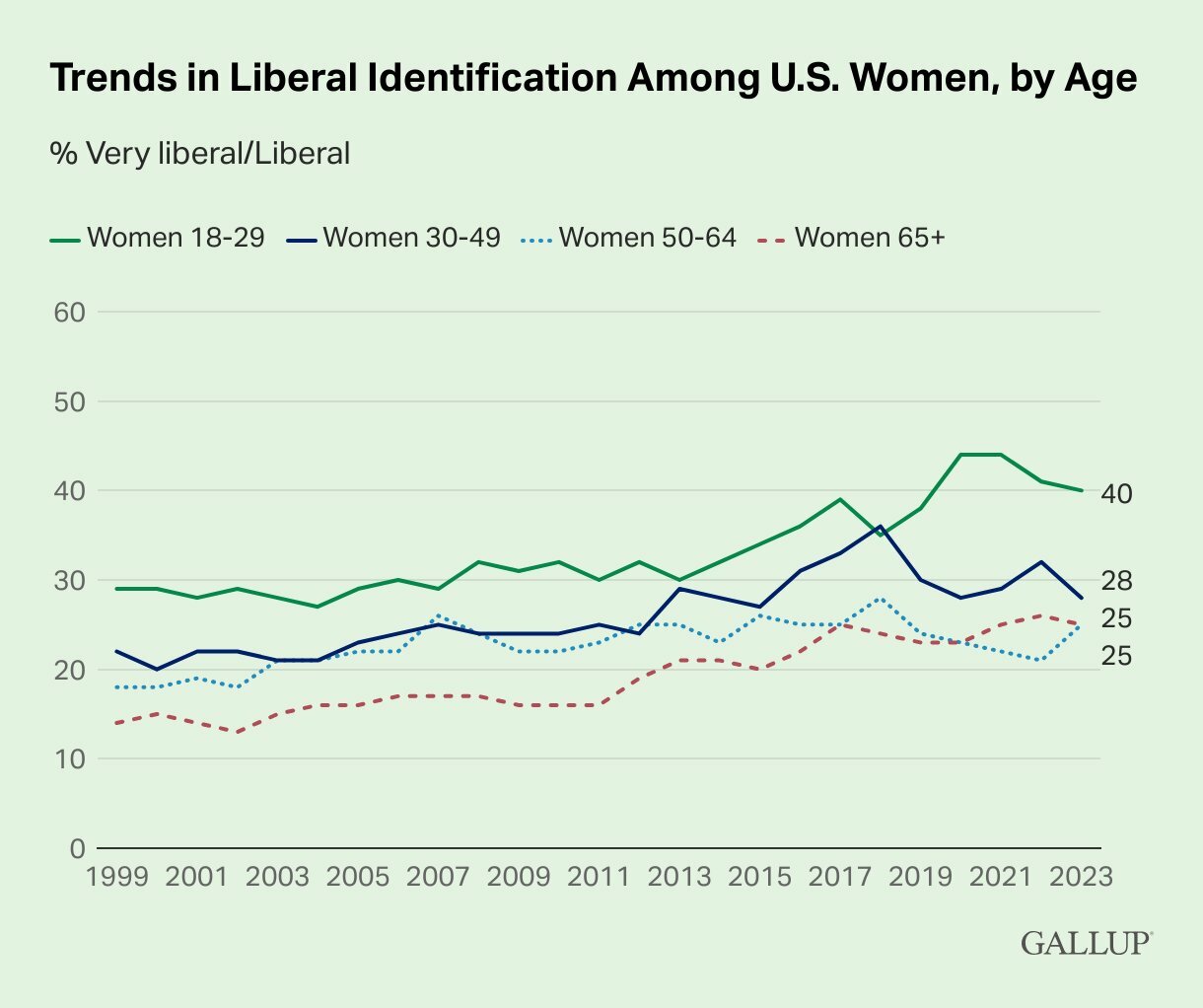A recent Gallup poll shows that young and senior women identifying as liberal is up 11 points since 1999.
“They started to move to the left really around the time that Trump got elected president,” said NC State political science Professor Dr. Andrew Taylor. “So these figures that Gallup has, and have broken down by gender and age, are consistent with that.”
Middle aged women have become more liberal as well, but not as drastic of a change. While political ideology among men has changed less, data have shown men, too, be slightly more liberal than they were in 1999.
“Younger people tend to be more liberal than older people.” said Dr. Taylor, “That’s always sort of been the case, but this is particularly interesting amongst women.”
People who identify as liberal account for 25% of Gallup’s poll while people identifying as conservative or moderate account for 36% each. The percentage of conservative people has remained consistent, but those identifying as moderate have decreased as liberal identifying people increased, pointing to the source of the shift.
Although more people are identifying as liberal, Dr. Taylor believes ideological shifts may not correlate to more support for a party.
“Remember that ideology is different from partisanship,” said Taylor. “Even a move to the left might just be Democrats becoming more liberal. I’m not sure whether that is a negative or a positive for Republicans. It’s not clearly a negative. It’s a question of whether the median vote is moving in that way. That could possibly be a problem if the median vote is moving that way and the perception is that Republicans are moving to the right and then the distance between the median American and the Republican party is growing relative to the distance between the median American and the Democratic party.”
Other factors, too, suggest ideological shifts might not affect elections.
“If (liberal people) are concentrated in urban areas, then the effect is mitigated in legislative elections because they are already concentrated in certain areas,” said Taylor.
The shifts in people identifying as liberal between 1999 and 2023 are as follows:
- Women aged 50-64 were 18% liberal in 1999 and are now 25% in 2023. Men of the same age represented a 2% change from 14% to 16%.
- Women aged 30-49 showed an increase from 22% to 28%. Men of the same age showed an increase of 17% to 22%.
- Women aged 18-29 showed the biggest change going from 29% to 40%. Men of the same age represented the smallest change, increasing from 24% to 25%.

As of October 2022, 38.78% of registered voters are Democrats. Republicans represent 29.24% and unaffiliated voters represent 28.55%. While liberal identifying people remain the smallest percentage of the population at 25%, Democrats remain highest in registered voters.
“Clearly in the past, there have been a lot of moderate and even conservative Democrats in (North Carolina) and that has helped Republican candidates win statewide office,” said Taylor. “It used to be that Democrats vastly outnumbered both unaffiliated and Republican voters, but particularly unaffiliated. But if, now, there are no moderate or conservative Democrats anymore, perhaps there are no moderate or liberal Republicans, then an ideological move to the left is bad news for Republicans. If people are just voting ideology and there isn’t a distinction between party and ideology as there was in the past, a movement to the left for the population would be bad for Republicans. But these are national data and it’s not clear to me that this is happening in North Carolina. Nationally Democrats and Republicans remain evenly matched.”